There are no products in your basket.
Your mini basket




The hamsa is ubiquitous and it’s likely you’ll know it when you see it, even if you don’t know its meaning.
Appearing on everything from necklaces and bracelets, clothing and tapestry and as a popular tattoo design, the hamsa is a recognisable symbol throughout the globe.
The specific meaning of the hamsa depends on your culture and beliefs – discussed later in the article – but generally it is viewed as a symbol of good luck and protection against the evil eye (a folkloric symbol of curse or negativity from others). For this reason many hamsa bracelets and necklaces contain an engraved or painted eye at their centre.
Another common depiction at the centre of a hamsa talisman is a fish, which represents good luck and immunity from the evil eye.
Hamsa affirmation bracelets are therefore beautiful, mystical good-luck charms reminding you that you are safe and protected.
Wearing the hamsa either up, down or level holds different meanings.
Often necklaces will have the hamsa charm hanging down or facing upwards. Upwards denotes protection against evil and negativity from others (as well as negative self talk).
Downwards signifies good luck, prosperity and abundance.
Often on bracelets, the hamsa will lie horizontally – attached at either end by the chain – as with our selection. This symbolises unity and connection and in this way, they make excellent friendship bracelets.
The symbol has roots in various cultures, but it’s derived from the word ‘hamesh’, meaning five in Hebrew, which gives a clue as to its origins. Evidence shows it first appeared in Mesopotamia – an ancient region of what is now the Middle East.
The number five, and therefore the five fingers of the hamsa are significant in many of the main religions. In Buddhism, the five fingers denote the 5 chakkras; in Judaism it’s the five holy books; in Islam, for Shi’ite Muslims it’s the five protectors of the Prophet Mohammad and for Sunni Muslims it’s the five pillars of Islam.
The Chrisitan faith uses the hamsa less frequently, preferring the cross on jewellery instead. However, it’s sometimes used in Christianity to represent the hand of Mary.
Since the symbol of the hamsa began before the advent of religion and doesn’t specifically represent one faith, it’s generally not considered culturally insensitive to wear.
You can wear the hamsa as a spiritual talisman as opposed to a religious one, as long as you remain aware and respectful of the religious meanings attached to it throughout the world.
Toe rings are making a comeback. They disappeared off the scene for a while after spending the 90s adorning celebrities’ toes (although Jenifer Aniston never broke up with hers).
But just in time for the summer of ‘22, toe rings are to once again have their moment in the sun. At Soul Analyse, we have a selection of affirmation toe rings that will not only prettify your feet, but will remind you of your inner strength when you’re feeling – and looking – down.
Our affirmation toe rings are simple, delicate and powerful. Each features a different word of affirmation so that you remember just how loved, worthy and strong you truly are.
Although they might seem like a novel, Western jewellery phenomenon, toe rings actually date back to 4th century India.
Toe rings today are still a traditional, decorative accessory worn by Hindi women to denote marital status. Married women wear matching silver rings – gold jewellery, in the Hindu religion, is reserved for above the waist – on the second toe of each foot.
Like other symbolic jewellery with ancient origins, the toe rings of the Indian subcontinent are also worn as charms to ward off evil.
The most important piece of advice when it comes to toe rings is: keep it simple.
Thin, simple, unfussy bands on the toes look chicer than anything too decorative. More than that, they’re less likely to irritate.
Comfort needs to be considered more with toe rings than it does with finger rings. You need to still be able to walk comfortably, so the smaller and simpler the better.
Don’t be fooled into buying that jagged-edged, square-shaped toe ring because it looks beautifully unique; it’ll likely make your day miserable!
Luckily, our gorgeous toe ring collection keeps things pretty, uncomplicated and comfortable on your tootsies. Our rings are hypoallergenic (made using nickel-free stainless steel) and adjustable. They can be fitted on any toe, so you don’t have to follow the Indian bride’s rule if you don’t want to.
This is especially helpful since toes can be sensitive (not to mention the fact that many are squeamish about feets/toes), so a hypoallergenic, adjustable toe ring will work with and not against you.
Because toes are more sensitive than fingers, finding the best position for your toe ring is important.
The most comfortable point is usually between the toe pad and the toe knuckle. Here, the ring is less likely to touch the ground or rub against your shoe.
In terms of tightness, you want to make sure the ring needs to be pushed (gently) to slide on but that it can still turn on your toe once on.
For those who love the idea of foot jewellery but aren’t so hot on feet, you might be wondering whether you’ll get used to having something constantly touching them.
You will. As with any garment or piece of jewellery, in time, you’ll likely wear it in.
If you’ve never worn a toe ring before then it might be an odd sensation to begin with, but after a day of wearing one you won’t notice it’s there – so long as you’ve positioned it correctly and it’s the right size (see above point).
Toe rings are made to be worn in open shoes like sandals – mainly to show them off. But provided the ring is properly fitted you can wear your toe ring with any footwear.
Our toe rings are made from durable stainless steel. Stainless steel doesn’t tend to tarnish, but we recommend always erring on the side of caution and removing your toe ring before swimming in pools with chlorine. As a chemical, chlorine can have various effects on different metals. Plus, you don’t want to lose it to the bottom of the pool.
We don’t recommend wearing a toe ring under tights because of the risk of snagging. Even if your toe ring is small and smooth, there’s still a chance it could catch on the thin fabric of tights.
Also, as tights stretch over, and compress your feet, they’re likely to aggravate a toe ring.
Most importantly, jewellery is made to be seen and admired – so dust off those summer sandals and show your toe rings off to the world!
Anxiety affects about 1 in 6 people in the UK. At some point in our lives all of us will experience anxiety in one form or another – whether it’s feeling nervous about a job interview, worrying about a relationship or being stressed out by work.
But when anxiety infringes heavily on our everyday lives is when it becomes problematic.
Seeking help for anxiety or any mental health issue is something we would always encourage, but in the meantime, relievers like anxiety rings can offer solace.
Anxiety rings can be very effective in releasing the anxious mind from its bind. It’s important to note that they shouldn’t be viewed as a cure-all solution to anxiety, rather, a soothing source of momentary comfort.
Anxiety rings are like any other ring. The difference is that they include moveable design elements which, when touched, are known to help distract, calm and soothe. They work in much the same way as fidget spinners… except anxiety rings are prettier and wearable!
Playing with an anxiety ring is an alternative to other anxious compulsive behaviours like nail-biting or hair-pulling. An anxiety ring is more discreet and helps promote mindfulness. You might even find that playing with an anxiety ring stops you biting your nails.
Our stylish and delicate Fidget Anxiety Spinner Ring features tiny, movable, bead-like elements which can be moved from side-to-side or spun, helping you relieve stress whenever you need.
Katherine Isbister, Ph.D., Research Director of the Social Emotional Technology Lab at the University of California says, “Humans are not built to sit still all day long and use only our heads”.
It’s a reassuring statement when we consider that many of us find ourselves obliged to do exactly this, everyday, at work. It’s no wonder then that we feel tetchy from time to time.
As well as distracting from stress, anxiety rings can help ground you. When your mind goes into overwhelm, momentarily playing with an anxiety ring helps you refocus and redirect nervous energy.
The need for sensory stimulation is not a new thing. Prayer beads, weighted meditation balls and the like have existed for centuries. This proves that, as Dr Isbister states, anxious fidgeting is natural and not a direct response to modern-day stimuli – as we might think.
In fact, fidgeting, restlessness and hyper-vigilance is a physical response to perceived threat. So, from an evolutionary standpoint, anxiety has been crucial to our survival.
What this means is, if you feel anxious, there isn’t something wrong with you and you’re also not alone. Luckily, these days we’re not fending off wild animals as we hunt for food, but the emotional and physical threats in today’s society are still just as real and difficult to navigate. If you feel anxious, or if you know you’re triggered by certain situations (most of us are), consider an anxiety ring. That it doubles up as a beautiful piece of jewellery is a happy bonus.
Looking for affirmation jewellery but have sensitive skin? Look no further than Soul Analyse for jewellery that is kind to both your skin and your soul. Our affirmation jewellery uses metals known for their hypoallergenic qualities.

When it comes to jewellery, there’s nothing more disappointing than excitedly donning your newly-bought necklace only to come out in a rash within half an hour.
If you’ve ever experienced itchy or swollen skin after wearing your favourite jewellery, or even green knuckles after removing your rings, then you know how jewellery can irritate.
This is your body having an allergic reaction to the metals or alloys (metal mixes) used in jewellery. The main culprit is nickel – the skin’s nemesis! Nickel is a common cause of skin irritation, though occasionally zinc is also not so skin-friendly either.
It’s a misconception that cheap, costume jewellery is always the problem, because golds and silvers can irritate too. However, costume jewellery typically uses base (non-precious) metals like nickel, copper and zinc in high quantities.
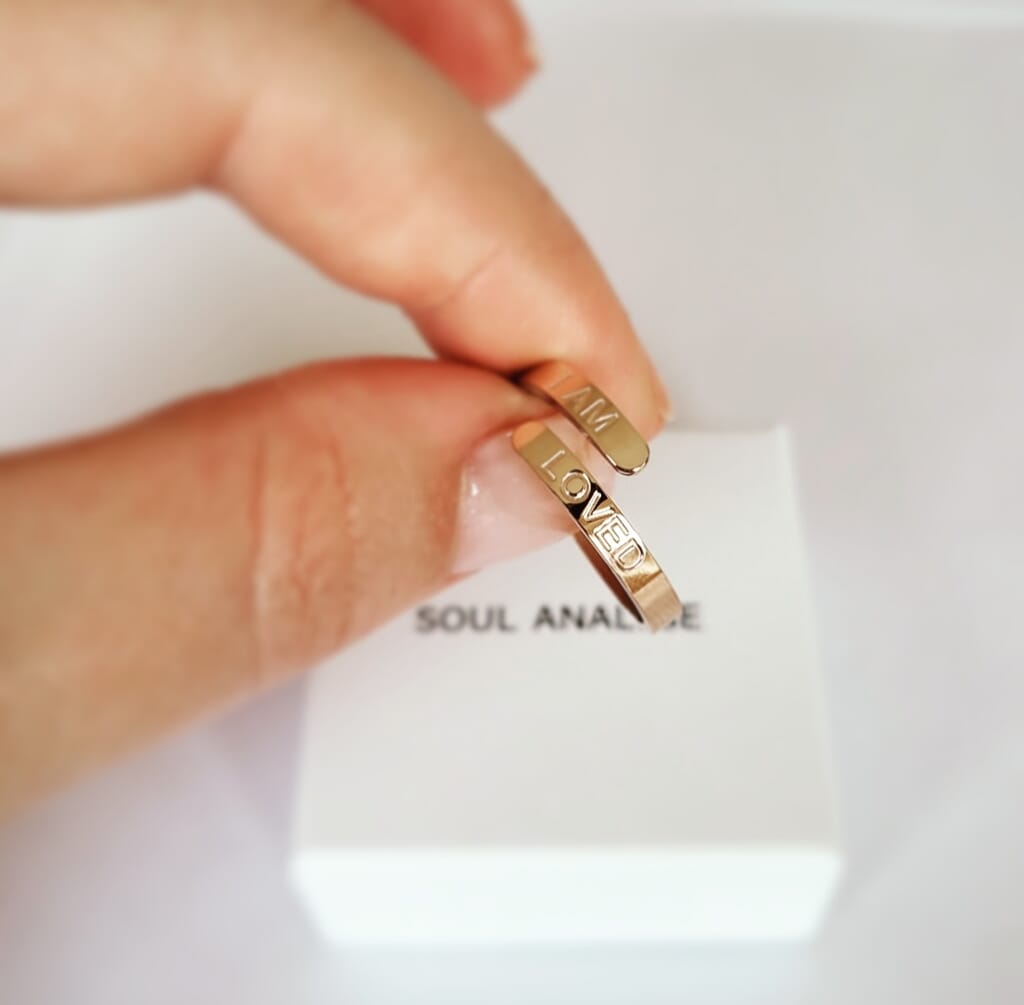
We want you to be able to enjoy our affirmation jewellery without the fear of painful allergic reactions, so here at Soul Analyse we only stock nickel-free, hypoallergenic jewellery made from stainless steel.
Stainless steel is often used in surgical instruments because it’s corrosive-resistant. It’s also an oft-chosen metal for jewellery because of its durability. Generally, stainless steel contains very low levels of nickel – which enables jewellery that uses it to be classified as hypoallergenic.
However, it’s important to be aware that there are different grades of stainless steel. Sometimes, even those that contain trace amounts of nickel can cause reactions in people with hypersensitive skin.
Because of this, we only specifically use nickel-free stainless steel in our affirmation jewellery.
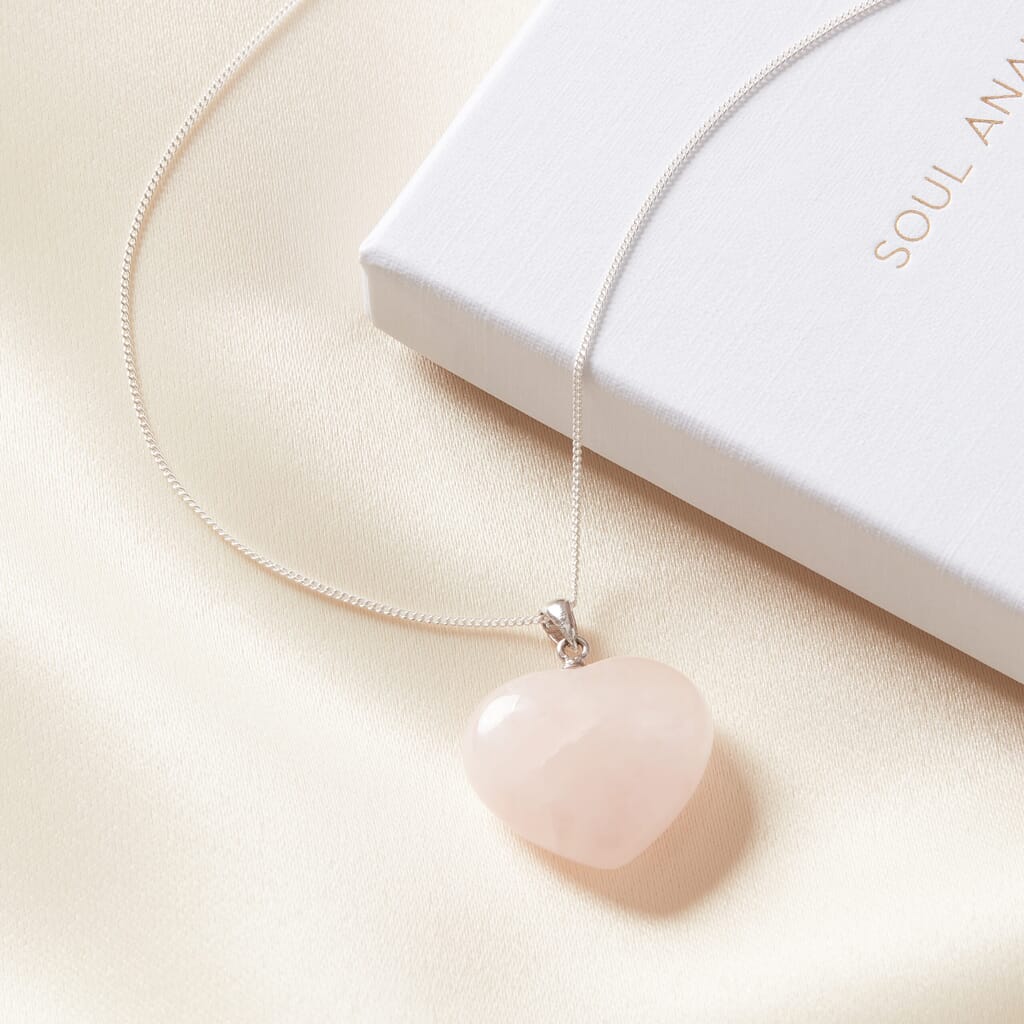
As a rule, the purer the metal, the less chance of an allergic reaction. As previously mentioned, stainless steel (particularly surgical-grade or guaranteed nickel-free) is a good option.
Otherwise, opt for platinum and titanium which are known for their high purity levels.
Gold and silver jewellery, no matter how high the karat count, is usually alloyed with other metals. This is because gold and silver alone are too soft to be used as jewellery. Gold over 14k is regarded as safe allergy-wise and the same is true for sterling silver – which is 92.5% silver (with the remaining 7.5% typically being copper). However, it’s always best to ask if you’re not sure or if you know you have particularly sensitive skin.
Additionally, beware of jewellery that masquerades as silver or gold but is in fact a base metal coated in gold or silver. This may be fine initially, but over time the silver or gold plating might wear away leaving your skin exposed to irritants in the base metal.
Our affirmation jewellery uses gold and silver coatings – but over stainless steel metal. And we are always up front about the metals we use.
Bereavement and grief in any form is perhaps the hardest thing for anyone to experience. In the aftermath of a bereavement, we desperately search for external sources of comfort, whether from another person, an animal or an object. Though it often feels like nothing can help, there are sometimes small comforts to be found here and there. And while they may be small, anything that gives us strength to continue on is worthwhile.
Affirmation jewellery cannot be an antidote to grief, but it can offer comfort during a time of acute pain.
Historical forms of bereavement and affirmation jewellery
Wearing jewellery to help heal pain or help empower is nothing new. The Victorians might not have had affirmation jewellery as such but they did wear jewellery to commemorate those they lost.
Bejewelled crosses; photographs in pendants; and even necklaces made from the woven hair of lost loved ones were all common throughout the period.
Going further back, prehistoric man wore a version of affirmation jewellery. Adornments were worn for protection or to signify status.
Spiritual jewellery still exists today in the form of birth stone pendants, hair lockets and even bracelets containing ashes.
Affirmation jewellery has the power to make you feel stronger in the face of adversity.
But additionally, whether it’s via inscriptions or symbolism, wearing jewellery that in some way reminds us of a lost loved one can keep us feeling connected to them. A beautiful necklace, ring or bracelet bought and worn specifically in their memory is also like a small act of reverence.
Matching jewellery worn in tandem with someone else shows solidarity. It’s a symbolic act that can nurture relations between grieving friends and family at a time when relationships can be fractious.
Ultimately affirmation jewellery can bring invaluable comfort and peace when we are struggling to comfort and calm ourselves.
Gifting affirmation jewellery to someone coping with grief can be touching and thoughtful.
At their core, affirmations give hope. In our darkest times, particularly in the throes of grief, being reminded that hope exists is paramount.
We believe our affirmation jewellery has the power to make you feel steadier when everything feels upside down. Here are some of our pieces that can help with grief:
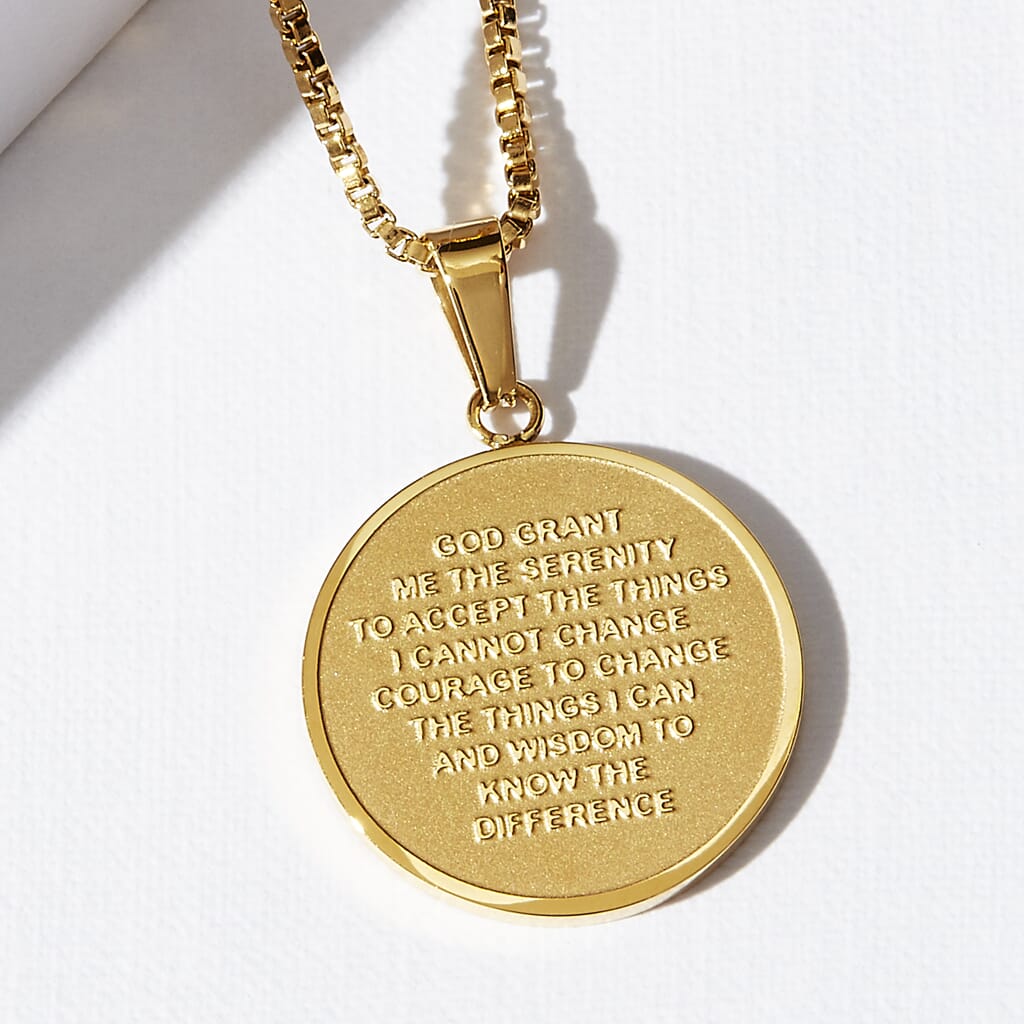
You don’t have to be religious to find solace in Niebuhr’s poignant prayer. Our serenity prayer necklaces are inscribed on one side with the words ‘One Day at a Time’ on one side and the serenity prayer on the other. His powerful words ask God for serenity and courage and the necklace comes in either silver or gold.
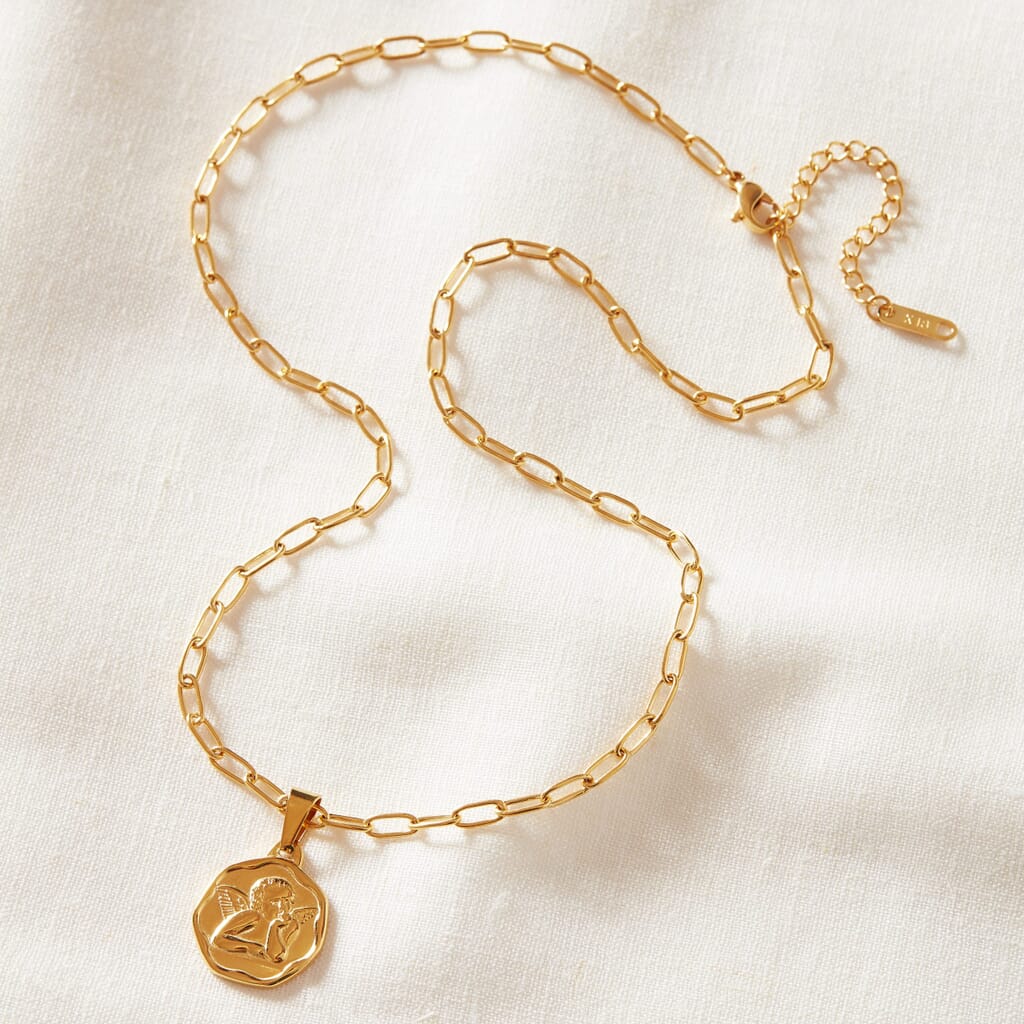
A figure synonymous with the afterlife is the angel. Though the concept of angels is rooted in Christian religion, these days they are perceived more broadly symbols of peace, protection and love. The practice of wearing angelic imagery in jewellery for protection is long running; embrace it with our angel coin necklace.

Our I Am Loved ring serves as a reminder of the love of friends and family but also that the love of a lost loved one continues on. Wearing such a reminder on your finger – within your eye line – might help you find daily consolation and comfort as you navigate grief.
It’s the New Year! Time for a fresh start, a new, healthier / happier / fitter / thinner / more knowledgeable / more confident / more impressive [insert superlative here] me!
Gosh. Does that second sentence make you feel a bit stressed? It does me.
Did you know that most New Year’s resolutions fail by February. Why? Because of the abject pressure we’re putting on ourselves with such lofty expectations like the above. When we fail at them – which we invariably do (it’s around 80%) – we create a negative self image by berating ourselves, and our mental health can spiral.
New Year’s resolutions are not bad in themselves. The concept is an exercise in goal setting, which many would argue is integral to success – if done correctly. The problem is that New Year’s resolutions have become a gimmick. There is so much hype around them that the pressure is huge, the ‘resolutions’ become insurmountable and perfectionism sets in – the killer of happiness and success.
Let’s take a look at some of the myths surrounding New Year’s Resolutions and what might help instead.
Actually, you can make changes and set goals at any point in your life, you don’t need to be governed by a specific date and time. In fact, if you become rigid about starting out on New Year’s Day afresh you are limiting yourself: if you miss the window of time you’ve set for yourself, you might be inclined to believe that was your only shot or tell yourself to wait until next year.
If this sounds like you, why not ditch the New Year’s resolutions and just set one goal for next week, or the week after or whenever you want to set it for.
Not only does this pile on undue pressure, but this myth promotes the classic ‘I will be happy when…’ belief. This well-known but unhelpful construct bases happiness on future outcomes and forever delays gratification (because the goal posts will continue to move). As Clinical Psychologist, Dr Natalia Peart suggests: ‘we must start seeing success as a lifestyle, not a destination.’
Take the pressure off, breathe and focus on the things around you right now that bring you joy. This could be the perfect time to start practising mindfulness to help bring yourself back to the now, when you’re worrying about the future.
In fact, it’s all the small changes that lead to success. Big, broad goals (like, ‘learn French’) are unlikely to be achieved because they aren’t measurable or specific.
Instead, interrogate the big goal to understand your feelings behind it and break it down: why do you want to learn French? What’s your level like already? How could you start? Then make a list of small, attainable goals that could lead there (research local French classes; buy a French-English dictionary; sign up for x3 months of French lessons) and set a time frame.
Guaranteed you will feel just as, if not more amazing completing one small goal.
To the previous point, this isn’t to say that small changes are easy. It doesn’t matter who you are, no change is ever easy – we just aren’t wired that way. On average it takes 66 days to form a habit and this comes from daily, repeated behaviour. So, even if your change seems small, to implement it into your life is going to take a bit of commitment.
That’s not to say you can’t do it (of course you absolutely can), but going in knowing this will help. Stop berating yourself if you find it difficult (because we all do) or if you miss a day (just get back up and start again).
That’s like my New Year’s resolution being ‘to become a black belt in karate’. I’ve never in my life practised a martial art. In fact, I’m not sure I’ve ever even watched a martial art. While it’s not impossible for me to become a black belt, it’s pretty unlikely. Why? Because I don’t even know if I’ll like it, and I’ll be way out of my comfort zone. Therefore – even with the best intentions – it’s likely I’ll eventually give up.
Trying new things is great, but it doesn’t need to be a New Year’s resolution or goal. By telling yourself you must succeed at something you’ve never had success with before, you are making things unnecessarily hard for yourself.
Equally, doing something because all your friends do it, or because you think you should will only bring frustration. Find something that you enjoy and you’re much more likely to succeed.
If you still want to set some New Year’s resolutions – or, let’s call them goals – the most important one of all is to be kinder to yourself. We often underestimate the importance of kindness – to others, yes, but mostly to ourselves! How can you do that? Well, positive affirmations are a good place to start.
Daily positive affirmations can have a huge impact on your self-image and in turn, a huge impact on your productivity and reaching your goals.
Instead of Dry January, how about trying our One Month Affirmation Challenge. Use our different sets of affirmations each week and make a positive impact on your wellbeing. Instead of giving up alcohol or chocolate, give up negative self-talk!
Over the past few decades we’ve seen fashion collide with politics as slogan tees shouted bold statements to the world. Now it’s time to shout (or rather, gently affirm) those bold statements to yourself.
Affirmation jewellery has the power to inspire, but far from being a gimmick or just another fashion trend, it actually promotes mental wellbeing.
As a gift for a loved one, affirmation jewellery can send a meaningful message – it shows that you care and that you’ve been paying attention.
When you’re out of inspiration for birthday, Christmas or anniversary gifts, affirmation jewellery might just be the ‘something a little different’ that you were seeking. Soul Analyse’s collection of hand-designed rings, necklaces, anklets and bracelets come with subtle messages to inspire and reassure.
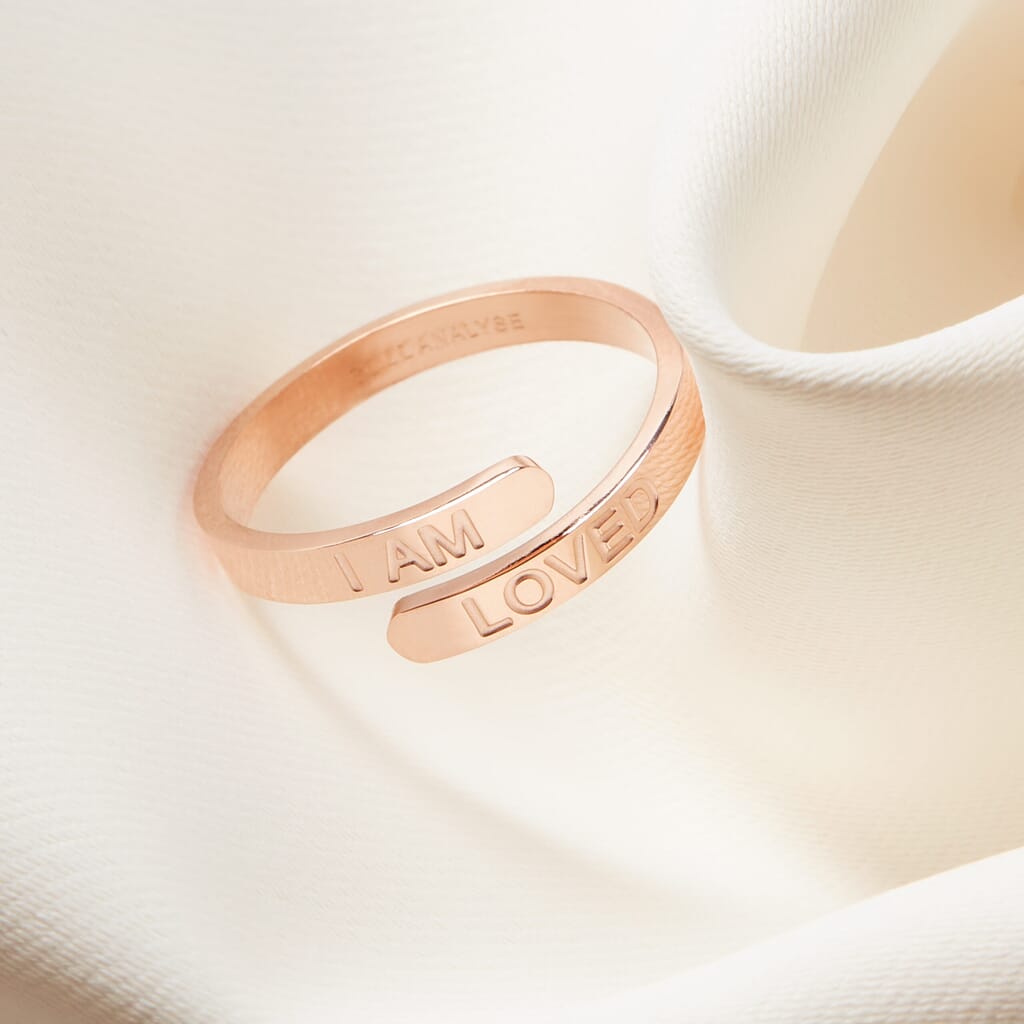
Affirmations are positive mantras recited to oneself to help shift mindset.
Affirmation jewellery then, is jewellery to aid in this positive shift, via inscribed, impactful statements.
The key to the success of affirmations is in their repetition. The general guidance has been to say affirmations aloud to yourself in the morning and evening.
However, this is just to accommodate our 9-5 Western lifestyles, because in fact, affirming positive statements to yourself is beneficial at any time of day – it’s just not always possible or appropriate when you’re in the office, the supermarket or in the middle of a packed bus.
But affirmation jewellery acts as a small injection of self belief at the times you need it most. For example, a glance down at the words ‘I am strong’ on your finger during a nervy job interview could be just the reassurance you need to ace it, and get the job.
Affirmation jewellery is about taking these positive mantras and using them as powerful reminders for yourself throughout the day.

Gifting affirmation jewellery shows thoughtfulness: essentially, that you are invested in the mental wellbeing of the recipient.
The inscribed mantras aren’t person specific and can be bought for most, yet at the same time feel profoundly significant and personal.
Receiving a gift that holds meaning for you over something generic is something we all appreciate. Affirmation jewellery, when chosen carefully, can show that you’ve been listening.
When buying jewellery as a gift generally, you want to take a few things into account: the person’s tastes; their ring size; their style; and their skin tone (typically, dark and olive tones suit gold and pale and pink tones suit silver).
Our collection of affirmation jewellery comes in an array of styles and classic designs that are suitable for most. Furthermore, our rings are all adjustable.

Soul Analyse offers affordable affirmation jewellery that serves to inspire. Take a look at our gifts section if shopping for a loved one – you can shop by recipient, occasion or price, simplifying the search for the perfect gift!
At Soul Analyse, the majority of our affirmation rings are fully adjustable – you simply pull to widen and squeeze to tighten, taking the ring sizing conundrum out of the shopping.
However, we have recently launched our most exciting product yet – The Affirmation Spinner Ring – and understand it might be helpful to know how to measure your ring size.
Home-measuring methods are very effective and if you happen to get it wrong at all, we offer a simple hassle-free way to send back your ring for a new size.
There are two ways to measure your ring size and both are as accurate as the other, it just depends on whether you already own rings.
You can either:
Or:
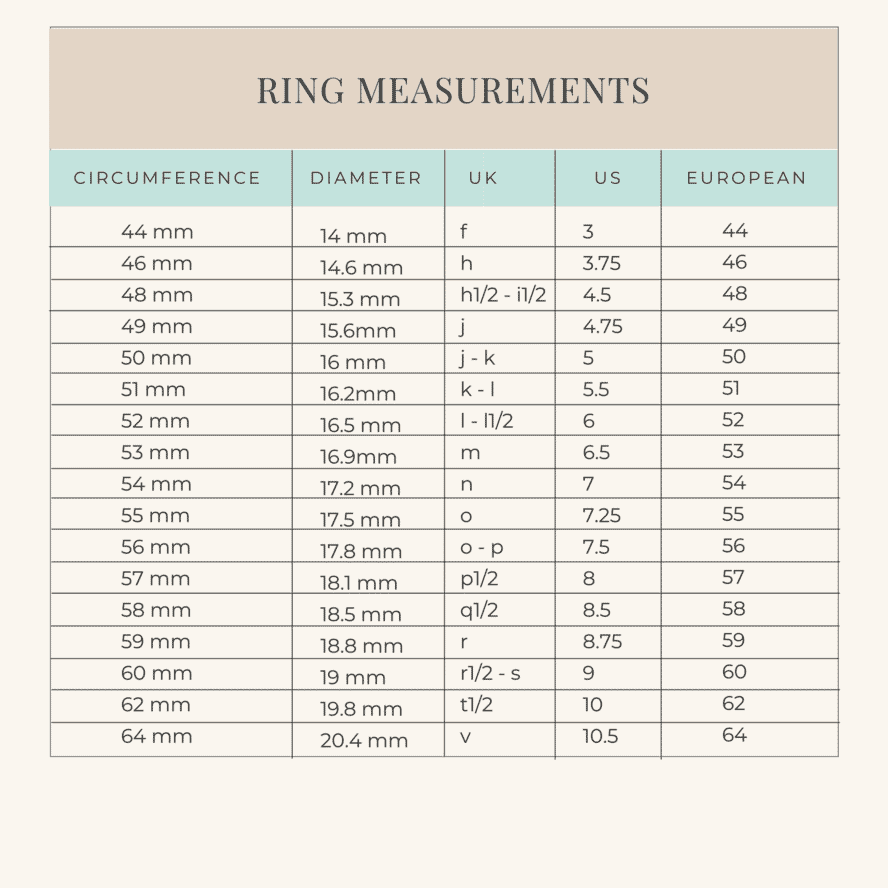
Professional jewellers use, either, an industry-standard ring sizer (a collection of metal rings in each ring size, for you to try on your fingers), or, a multi-sizer gauge (a device resembling a small belt, with a buckle that slides down to your finger).
Ring sizing systems differ from country to country. In the UK and Ireland ring sizes are categorised by an alphabetical scale devised by the British Standards Institution (BSI). This scale also uses half sizes.
Most ring sizes in the UK fall between I-Z. The most common ring size for women is N ½ and T ½ for men.
Whether it’s an engagement ring or a present for a friend, having the ring fit the first time is always the ideal scenario. This needn’t be an impossible task, but you will have to get stealthy!
The best way to surreptitiously find out the recipient’s ring size is to borrow another of their rings from the same finger and measure it. If you’re buying an engagement ring, and getting hold of a same-finger ring isn’t possible, try for a middle-finger ring on the same hand – middle fingers are the next up in size from ring fingers.
Whether it’s a gift for a loved one or yourself, Soul Analyse’s beautifully delicate rings (both finger and toe!) serve to empower, inspire and reassure. Shop the collection here.
